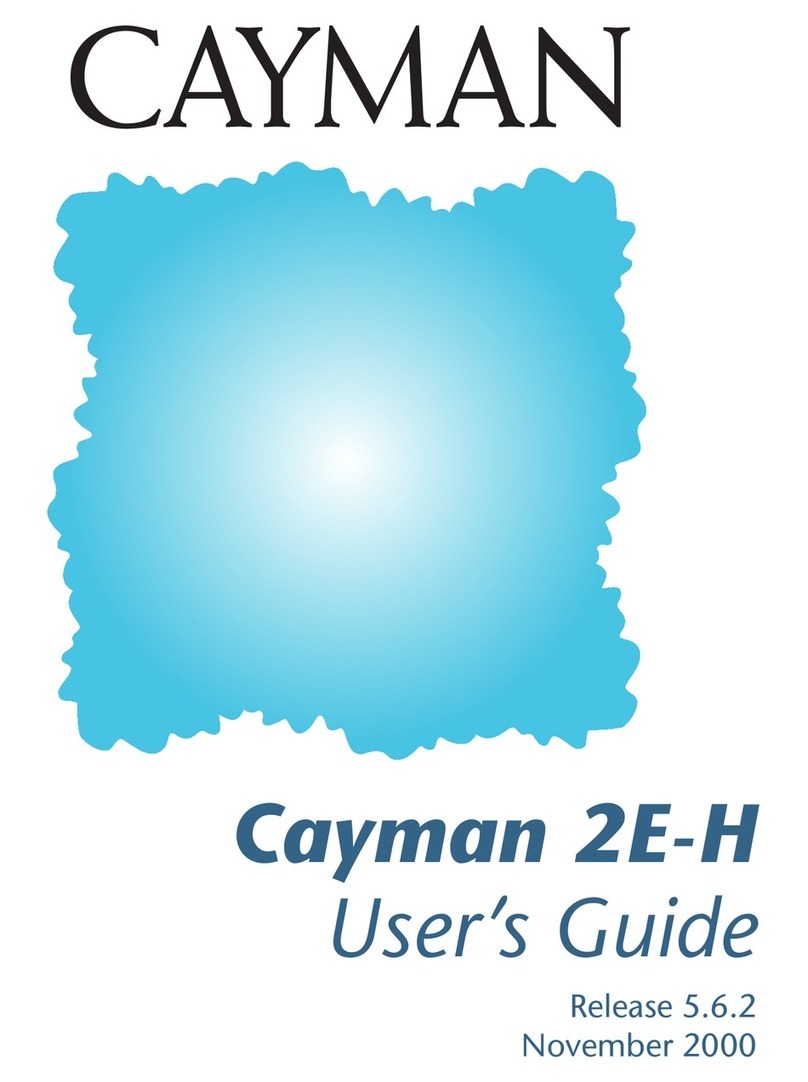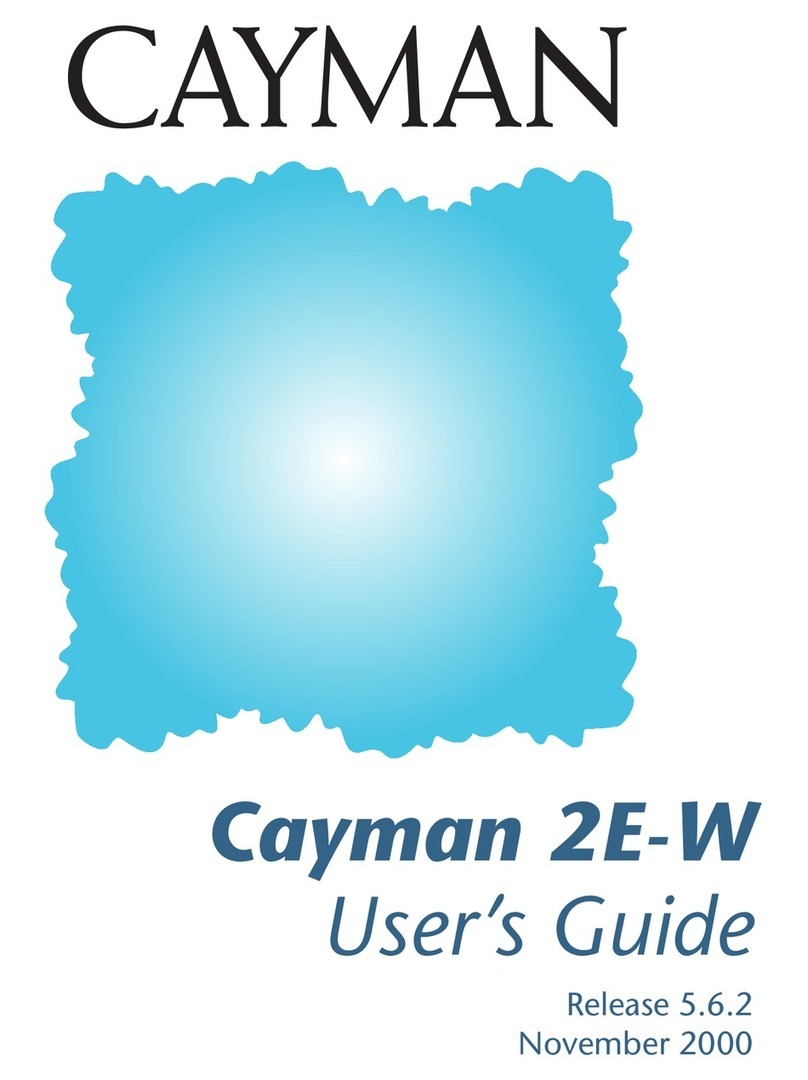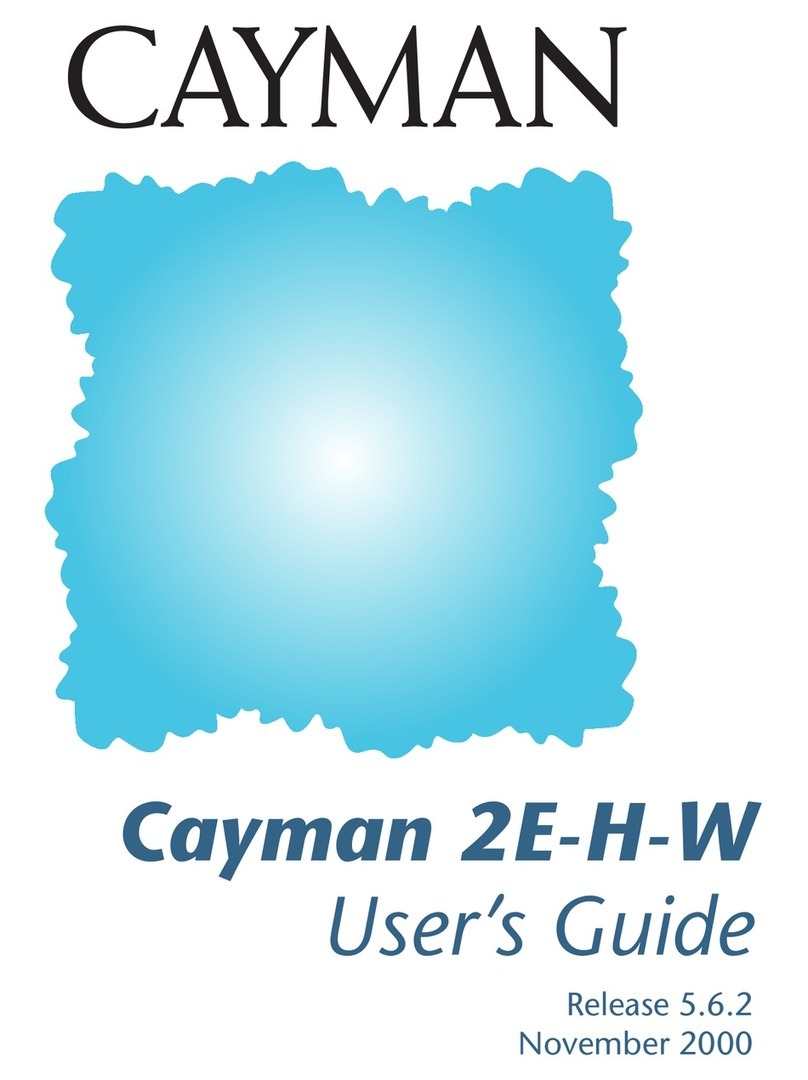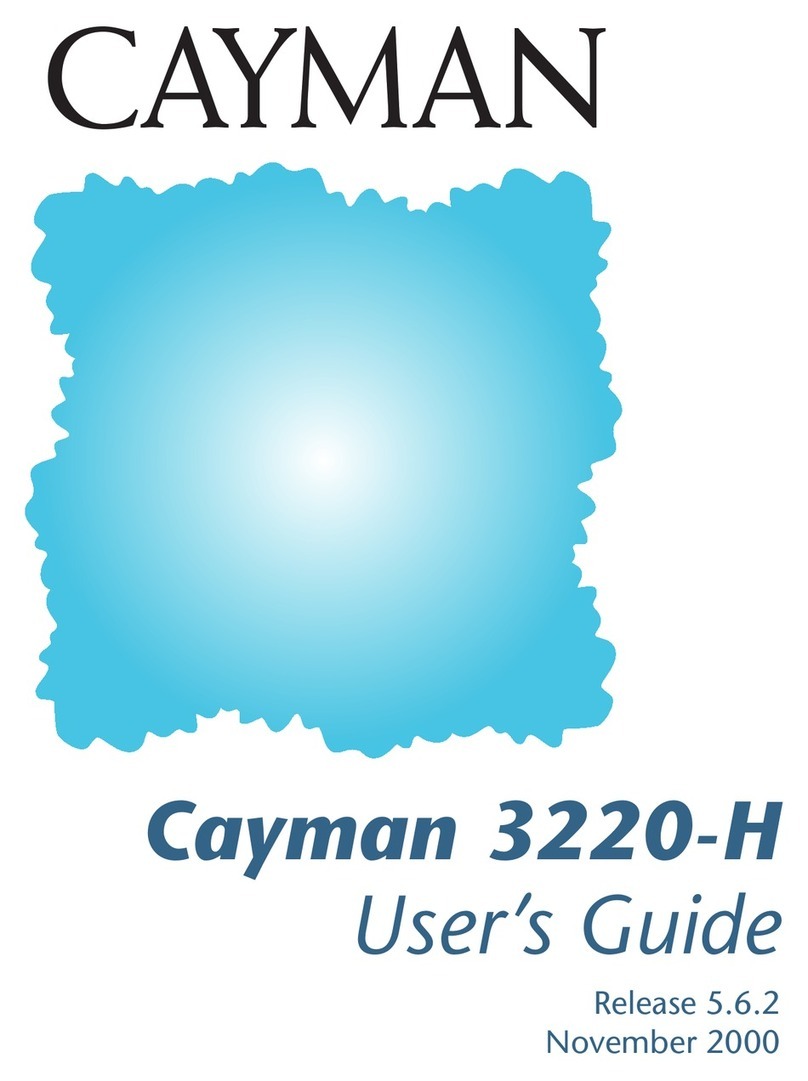4 1
The Cayman 2E is a two-port Ethernet router designed to connect workgroups on your
local area network (LAN) to your corporate network, wide area network (WAN) or the
Internet. Using the Cayman 2E to segment your workgroups ensures that the impact on
your corporate network is minimized while providing the bandwidth needed for
workgroup applications.
Cayman 2E features include the following:
•Installs in less than 10 minutes. Setting up the Cayman 2E consists of connecting it
to your networks and entering a few basic settings.
•Web-based browser configuration makes configuration and administration of your
Cayman 2E easy from anywhere on your network. The Cayman 2E also provides a
command line interface for configuring and monitoring the device over a Telnet
connection.
•Network Address Translation (NAT) support lets as many as 253 hosts on your
workgroup local area network share one IP address when communicating with hosts
on your corporate wide area network or the Internet.
•Dynamic Host Configuration Protocol (DHCP) client functionality lets a host on
your wide area network configure the IP address and other network settings for the
WAN interface on your Cayman 2E automatically.
•DCHP server functionality lets the Cayman 2E automatically configure the IP
addresses and other network settings for computers on your local area network.
•IP pinholes let you provide web services, mail services, or FTP services from your
local area network without compromising network security.
•Full-featured wide area network bridge supports a wide range of non-TCP/IP
protocols.
•Virtual Private Network (VPN) support, including interoperability with Assured
Digital, Inc. VPN switches.
•Bandwidth shaping lets carriers and service providers regulate the flow of traffic
through the WAN port in 64kbps increments.
IntroductionConfiguring Your Cayman 2E
To configure the Cayman 2E, you need a computer on the same TCP/IP network as the
Cayman 2E. Perform Steps 1 and 2 of “Configuring Your Computer” on page 3 for
information on how to configure your computer to use an IP address on the 192.168.1
network.
1. Determine whether your Internet Service Provider (ISP) has supplied you with
a Configuration Worksheet identifying the settings you are to use when
configuring your Cayman 2E.
• If you received a Configuration Worksheet, refer to it when configuring your
Cayman 2E.
• If you did not receive a Configuration Worksheet, your Cayman 2E has already
been configured, and no action on your part is needed. You can skip this section
or perform the steps to review your Cayman 2E configuration.
2. Run a Web browser application, such as Netscape Navigator or Microsoft
Internet Explorer, from the computer on the same network as the
Cayman 2E.
Refer to page 3 for information on how to configure your computer.
3. Open a session to your Cayman 2E.
Enter http://cayman-2e or http://192.168.1.254 in the Location text box. The browser
displays the Cayman 2E QuickStart window.
If your Configuration Worksheet tells you to use an IP address other than
192.168.1.254 to log in, enter http://<
ip-address
>.
4. Transfer the contents of each field on the Configuration Worksheet to the
corresponding field in the QuickStart window.
5. If you changed any of the fields in the QuickStart window, click the Save
button to save the modified Cayman 2E configuration. When you see the
Cayman 2E Home page, click the Restart Cayman-2E button to restart your
Cayman 2E with its new configuration settings.




























